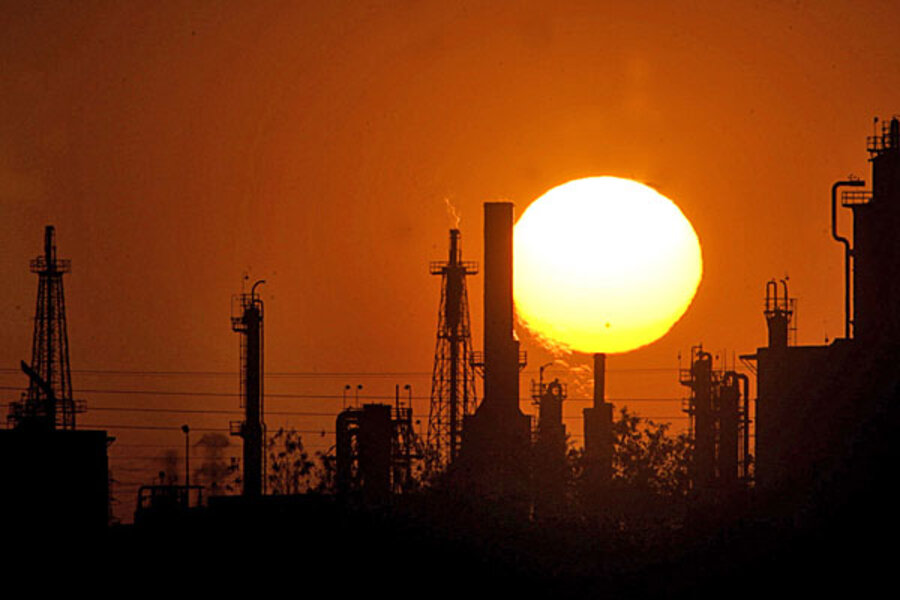Why greenhouse gases hit record high in 2011
Loading...
| Geneva
Atmospheric volumes of greenhouse gases blamed for climate change hit a new record in 2011, the World Meteorological Organization (WMO) said in its annual Greenhouse Gas Bulletin on Tuesday.
The volume of carbon dioxide, the primary greenhouse gas emitted by human activities, grew at a similar rate to the previous decade and reached 390.9 parts per million (ppm), 40 percent above the pre-industrial level, the survey said.
It has increased by an average of 2 ppm for the past 10 years.
RECOMMENDED: Are you scientifically literate? Take the quiz.
Fossil fuels are the primary source of about 375 billion tonnes of carbon that has been released into the atmosphere since the industrial era began in 1750, the WMO said.
WMO Secretary-General Michel Jarraud said the billions of tonnes of extra carbon dioxide would stay in the atmosphere for centuries, causing the planet to warm further.
"We have already seen that the oceans are becoming more acidic as a result of the carbon dioxide uptake, with potential repercussions for the underwater food chain and coral reefs," he said in a statement.
Levels of methane, another long-lived greenhouse gas, have risen steadily for the past three years after levelling off for about seven years. The reasons for that evening out are unclear.
Growth in volumes of a third gas, nitrous oxide, quickened in 2011. It has a long-term climate impact that is 298 times greater than carbon dioxide.
The WMO, the United Nations' weather agency, said the three gases, which are closely linked to human activities such as fossil fuel use, deforestation and intensive agriculture, had increased the warming effect on the climate by 30 percent between 1990 and 2011.
The prevalence of several less abundant greenhouse gases was also growing fast, it said.
Sulphur hexafluoride, used as an electrical insulator in power distribution equipment, had doubled in volume since the mid-1990s, while hydrochlorofluorocarbons (HCFCs) and hydrofluorocarbons (HFCs) were growing at a rapid rate from a low base.
But chlorofluorocarbons (CFCs) and most halons were decreasing, it said.
RECOMMENDED: Are you scientifically literate? Take the quiz.





